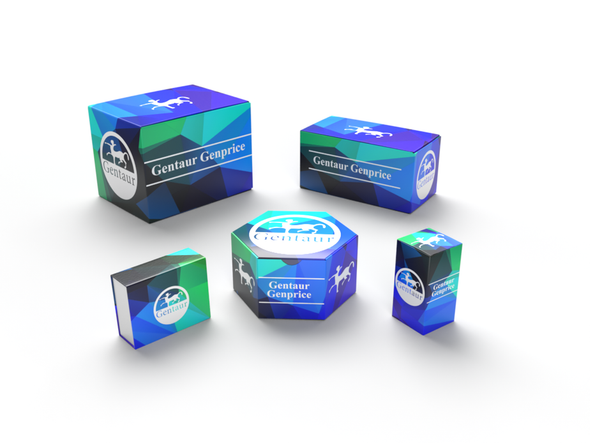740
Goat Cytochrome C oxidase (COX) ELISA Kit | AE64448GO
- SKU:
- 740-AE64448GO
- Availability:
- Usually ships in 5 working days
Description
Goat Cytochrome C oxidase (COX) ELISA Kit | AE64448GO | Gentaur UK, US & Europe Distribution
Species Reactivity: Goat (Capra hircus; Caprine)
Abbreviation: COX
Alternative Name: N/A
Application: ELISA
Range: Request Information
Sensitivity: Request Information
Intra-Assay: ≤5.3%
Inter-Assay: ≤7.8%
Recovery: 0, 96
Sample Type: Serum, Plasma, Other biological fluids
Detection Method: Sandwich
Analysis Method : Quantitive
Test Principale: This assay employs a two-site sandwich ELISA to quantitate COX in samples. An antibody specific for COX has been pre-coated onto a microplate. Standards and samples are pipetted into the wells and anyCOX present is bound by the immobilized antibody. After removing any unbound substances, a biotin-conjugated antibody specific for COX is added to the wells. After washing, Streptavidin conjugated Horseradish Peroxidase (HRP) is added to the wells. Following a wash to remove any unbound avidin-enzyme reagent, a substrate solution is added to the wells and color develops in proportion to the amount of COX bound in the initial step. The color development is stopped and the intensity of the color is measured.
Product Overview: MT-CO1 belongs to cytochrome c oxidase subunit I protein family. It is often used in DNA barcoding, because its mutation rate is often fast enough to distinguish closely related species. In most if not all seed plants, however, the rate of evolution of cox1 is very slow.The enzyme complex consists of 3-4 subunits (prokaryotes) up to 13 polypeptides (mammals) of which only the catalytic subunit (equivalent to mammalian subunit I (CO I) ) is found in all heme-copper respiratory oxidases. The presence of a bimetallic centre (formed by a high-spin heme and copper B) as well as a low-spin heme, both ligated to six conserved histidine residues near the outer side of four transmembrane spans within CO I is common to all family members.
Stability: The stability of ELISA kit is determined by the loss rate of activity. The loss rate of this kit is less than 5% within the expiration date under appropriate storage condition. The loss rate was determined by accelerated thermal degradation test. Keep the kit at 37°C for 4 and 7 days, and compare O.D.values of the kit kept at 37°C with that of at recommended temperature. (referring from China Biological Products Standard, which was calculated by the Arrhenius equation. For ELISA kit, 4 days storage at 37°C can be considered as 6 months at 2 - 8°C, which means 7 days at 37°C equaling 12 months at 2 - 8°C) .






